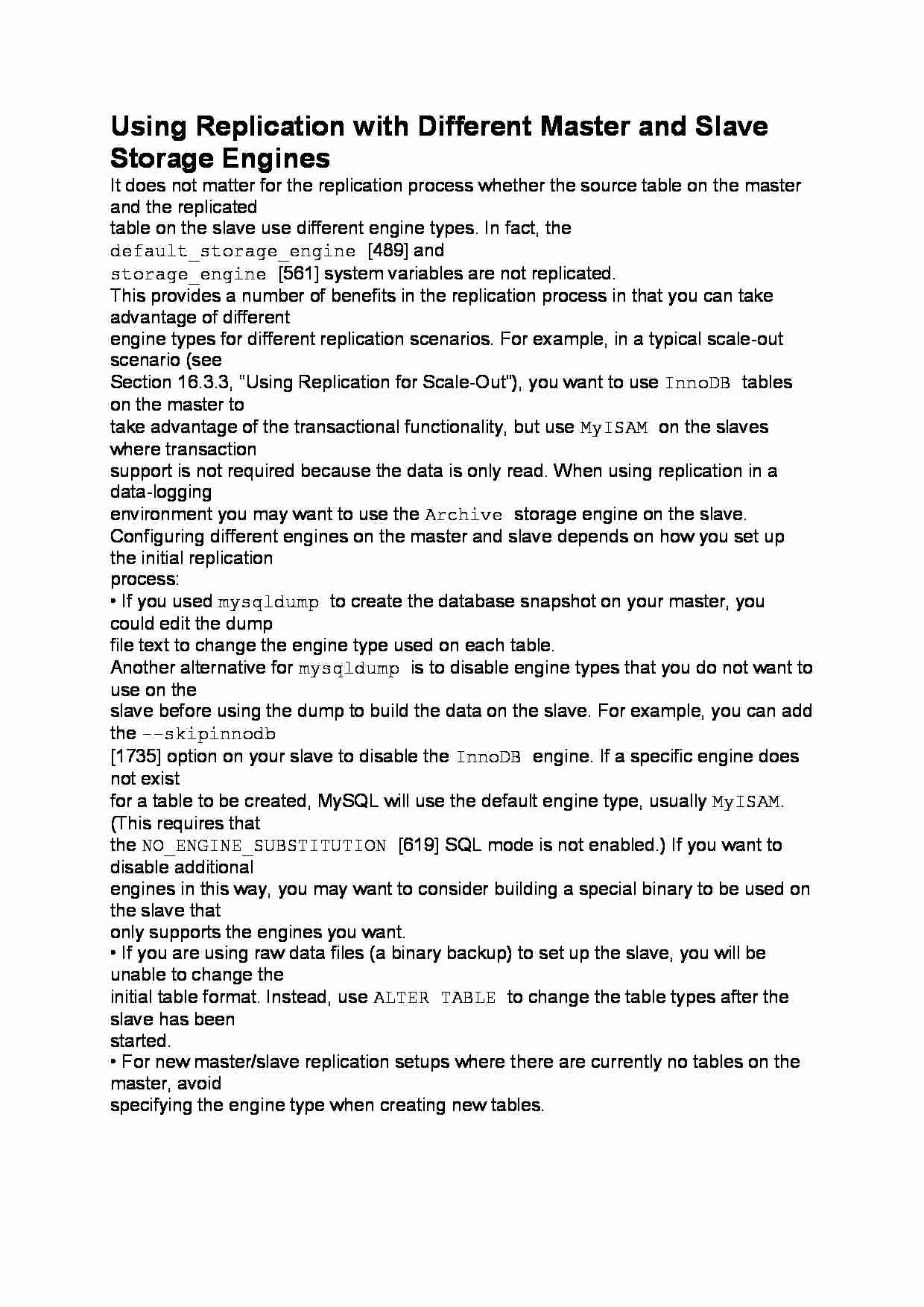
Using Replication with Different Master and Slave Storage Engines
It does not matter for the replication process whether the source table on the master and the replicated
table on the slave use different engine types. In fact, the default_storage_engine [489] and
storage_engine [561] system variables are not replicated.
This provides a number of benefits in the replication process in that you can take advantage of different
engine types for different replication scenarios. For example, in a typical scale-out scenario (see
Section 16.3.3, “Using Replication for Scale-Out”), you want to use InnoDB tables on the master to
take advantage of the transactional functionality, but use MyISAM on the slaves where transaction
support is not required because the data is only read. When using replication in a data-logging
environment you may want to use the Archive storage engine on the slave.
Configuring different engines on the master and slave depends on how you set up the initial replication
process:
• If you used mysqldump to create the database snapshot on your master, you could edit the dump
file text to change the engine type used on each table.
Another alternative for mysqldump is to disable engine types that you do not want to use on the
slave before using the dump to build the data on the slave. For example, you can add the --skipinnodb
[1735] option on your slave to disable the InnoDB engine. If a specific engine does not exist
for a table to be created, MySQL will use the default engine type, usually MyISAM. (This requires that
the NO_ENGINE_SUBSTITUTION [619] SQL mode is not enabled.) If you want to disable additional
engines in this way, you may want to consider building a special binary to be used on the slave that
only supports the engines you want.
• If you are using raw data files (a binary backup) to set up the slave, you will be unable to change the
initial table format. Instead, use ALTER TABLE to change the table types after the slave has been
started.
• For new master/slave replication setups where there are currently no tables on the master, avoid
specifying the engine type when creating new tables.
... zobacz całą notatkę



Komentarze użytkowników (0)